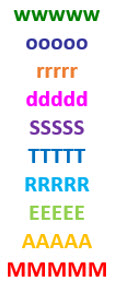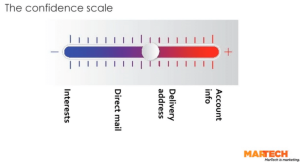
Programmatic ad buying began with search engine marketing. Data introduced programmatic audience buying for display, video, television and other media buys. Unlike audience buying, Google AdWords and Bing Ads, described as auction-based systems, allow marketers to bid on keywords, rather than lumping personas into audiences. The campaigns would rise to the top above the fold, with many of these search campaigns run by in-house marketing departments, rather than agencies.
As the number of keywords and campaigns per brand grew, agencies stepped in to offer assistance. We now see the reverse occur. More budgets are headed in-house as brands like Geico, Netflix, Gap, AT&T and Progressive build their own in-house programmatic buying teams sending dollars through self-serve demand-side platform like Turn, Mediamath, and engage:BDR, rather than traditional ad networks. Keeping more of the programmatic processes in-house requires companies to depend more on first-party data and lookalike audience models.
Branding vs. direct response: Programmatic is just the technology on the back-end powering the transaction. AdWords customers use keywords for search and display media buys. When a brand places a bid in the programmatic system they will consider demographic, location, topics on sites or specific placements. A brand marketer places a bid in the programmatic system, taking into account demographic, location, topics on sites or specific placements. If the marketer holds the winning bid, an impression serves up on the publisher site direct through an exchange — not just Google’s, but others.
I hear that marketers consider targeting by audience an advantage. What if these systems add contextual signals into the mix? Marketers have begun to understand that programmatic auction-based systems can give them better access to premium inventory. Many have come to realize that the correct data turns remnant inventory buys into premium because it gives media buyers more information to make better decisions. But let’s take it one step further.
What’s stopping brands from increasing their ad targeting in real-time by combing contextual targeting with first-party audience data and lookalike modeling to improve the relevancy of ads? Why wouldn’t they want to consider the words and contextual meaning on the page? Google does it across its partner network. Not all have that capability.
Contextual targeting will emerge in the next year to work with audience-based and lookalike targeting. Marketers are still focused on the latter. If programmatic means delivering the correct message to the perfect person because it gives brand marketers the ability to identify quality publishers and premium ad units, the model should run on more than audience-based first party and lookalike data models. It should take into consideration the contextual information on the publisher’s page or the ecommerce site. The next step also requires the industry to create a metric to identify brand impact similar to tangible performance goals, so marketers can measure each dollar spent.
Earlier this year, Google released a post on the imbalance of data and creative pieces in campaigns used to brand products and services. It provides details of through how marketers can combine programmatic media-buying and data to run campaigns that achieve both brand impact and performance goals. Here’s a Gol Linhas Aereas case study published in July explaining how the Brazilian airline integrated programmatic ad buying with search engine optimization.
AOL’s push on programmatic paid off in Q2. The company’s global advertising revenue rose 20% — partly attributable to its programmatic platform, as well as uptick in ad pricing and video advertising. “The combination of AOL’s higher-quality content brands with a scaled/multi-format programmatic ad platform (esp. for video) has the potential to create a valuable/sustainable position for AOL in the broader ad ecosystem over time,” wrote Macquarie Securities Analyst Tom White in a recent research note.
As the shift toward bringing programmatic media buys in-house continues, consider these three points.
Target Data: Consider data and lookalike segments to hit the specific audience in premium inventory and be prepared to integrate contextual targeting.
Premium Inventory: Use a platform that won’t tarnish the brand’s image and will provide more control of media buys.
Strong Reporting: Work with flexible analytics to help hit the key performance indicators and develop a metrics to identify performance.
“Bidding Sign” photo from Shutterstock.
(456)
Report Post






